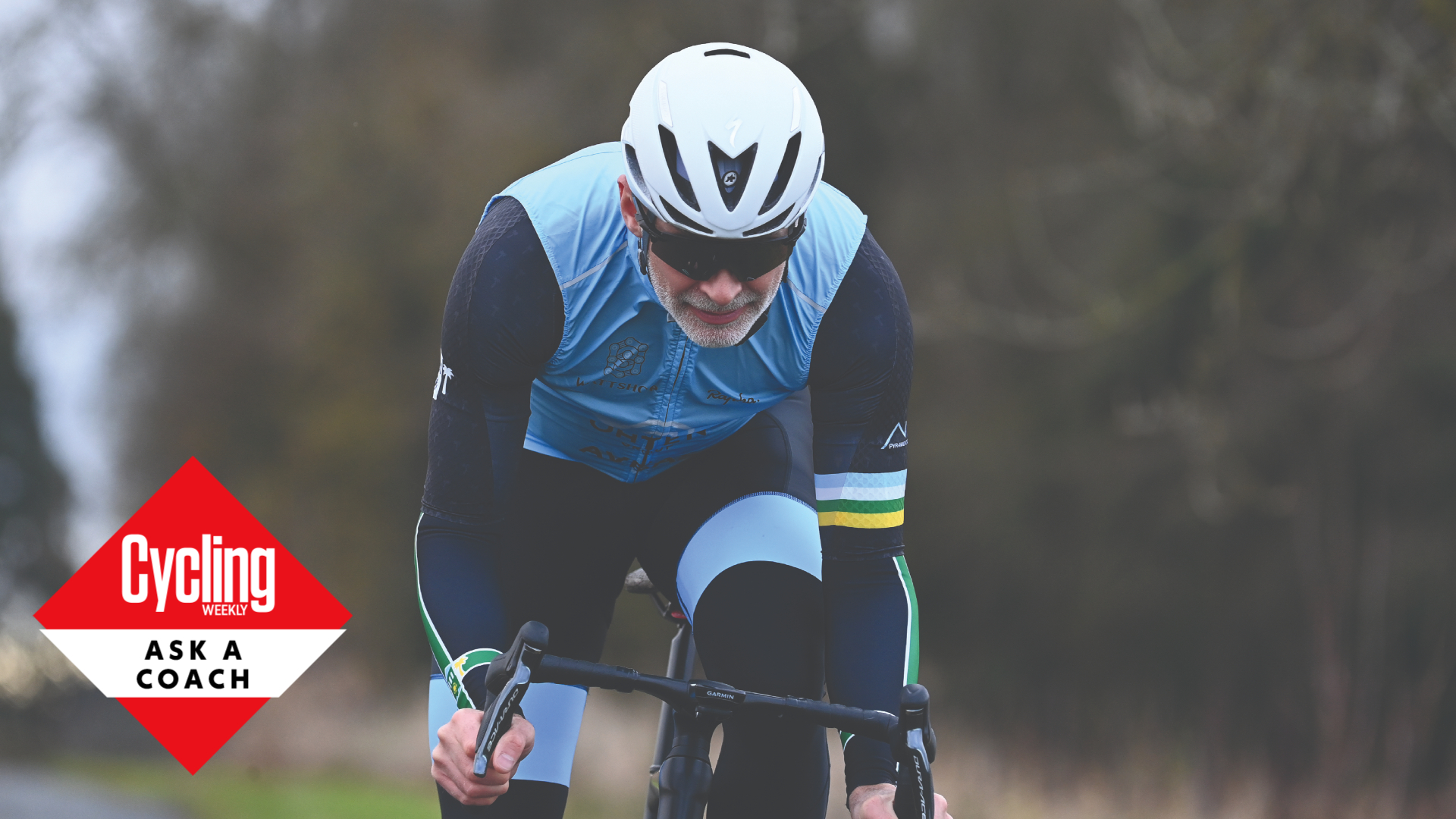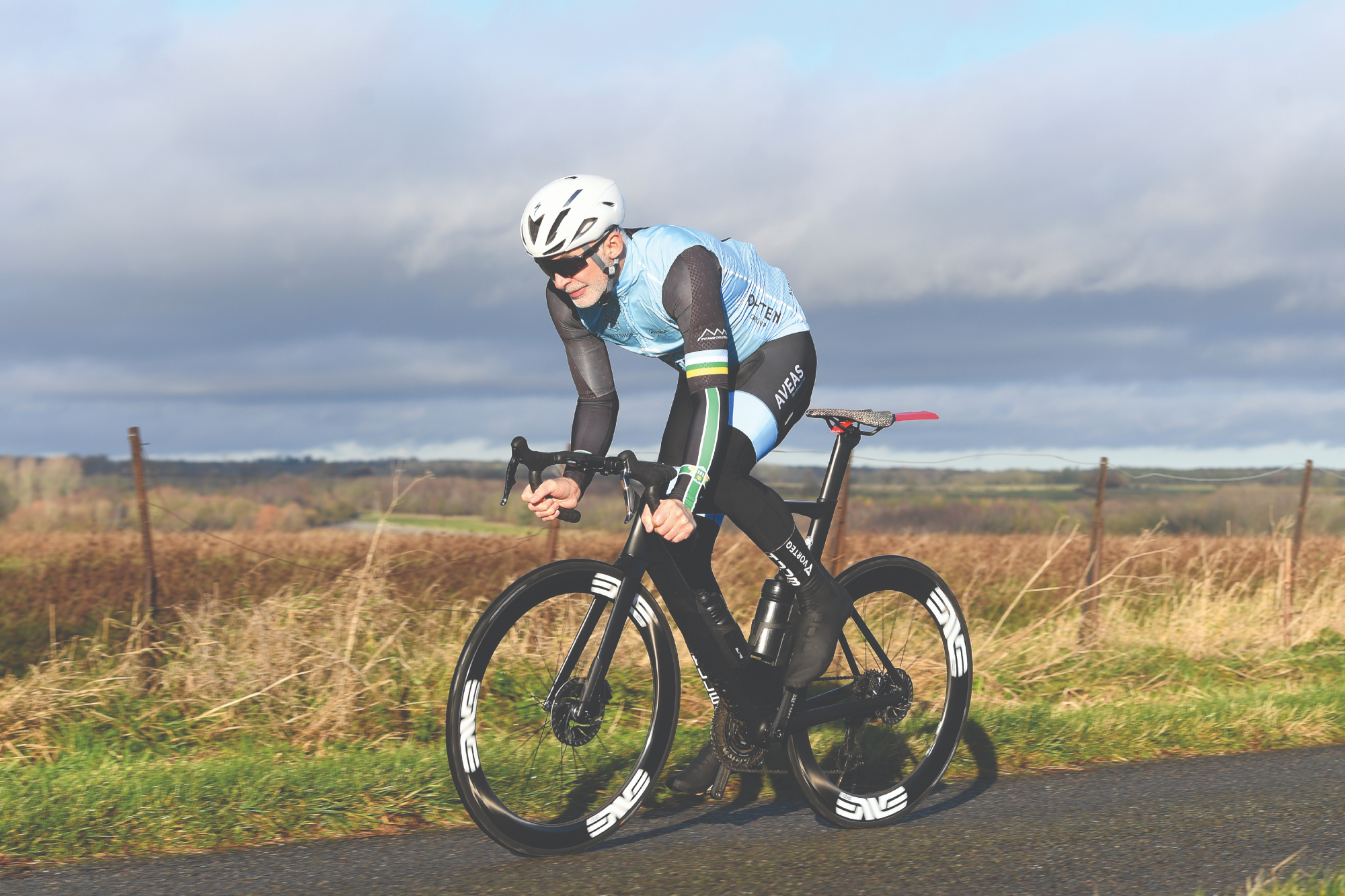Ask a coach: 'I’m over 40, what is a good VO2 max for my age?'
VO2 max measures how much oxygen your body can utilise in a minute - but how does yours compare to the average, and does it matter?


These ‘what is a good [XYZ]’ questions are always interesting. Firstly, what is good for one person is not good for another and secondly, knowing what is a good / bad value is far less important for a performance perspective than improving your current fitness.
That said, after Critical Power or FTP, VO2 max is probably the most talked about metric in cycling. VO2 max is a measure of how much oxygen your body can utilise in a minute. It is measured in ml of oxygen per minute, this value is then often then divided by body mass.
On a population level, it is a nice predictor of differences in performance between groups. But before cycling coach James Spragg dives into VO2 max and why the headline number is not the be-all and end-all, let’s look at the population average...

Sports scientist and coach James Spragg is one of the experts who will be answering your questions in Cycling Weekly's ASK A CYCLING COACH series which comes out every Wednesday. Working both in research and applied settings, he currently runs Intercept Performance Consultancy.
What is the average VO2 max for a 40 year old
The average VO2 max for a 40-year-old is 3l per minute for men and 2l/min for women. If we divide this by the average body mass we get values of 41ml/kg/min for men and 35ml/kg/min. Therefore, it could be argued that anything above these values is good and anything below isn’t so good.
Why VO2 max is not everything

Cycling performance is not only about VO2 max. It is only one of three factors that determine our Critical Power / FTP. The others are efficiency and the sustainable percentage of VO2 max.
Efficiency
When we exercise, we take in oxygen and convert that to some power and a lot more heat. The ratio of the energy released when we ‘burn’ the oxygen that is converted to power is what we call exercise economy. Typically professional cyclists may be able to convert 25 per cent of the energy available into power at the pedals! For amateurs, this value will be much closer to 20 per cent.
The latest race content, interviews, features, reviews and expert buying guides, direct to your inbox!
Therefore, even if two cyclists have exactly the same VO2 max, due to differences in efficiency, one cyclist may be able to sustain 5 per cent more power.
Sustainable percentage of VO2 max
We can only sustain VO2 max for 3 to 5mins. Therefore, anytime we need to go harder for longer we need to ride at a percentage of VO2 max. The higher the percentage we can sustain the more oxygen we can deliver to our muscles and the more power we can produce. A world-class endurance athlete might be able to sustain as much as 90 per cent of VO2 max for an hour whereas an amateur might be down as low as 70 per cent. Therefore, again two athletes with the same VO2 max might be able to sustain very different power outputs based purely on differences in the percentage of VO2 max they can sustain.
The verdict
Add this all together and you get to a point whereby the performance differences between athletes with the exact same VO2 max can be rather large. It's for this reason that I have recently argued that even in scientific literature we should maybe move away from relying purely on VO2 max to describe fitness and instead, at least for endurance athletes, focus on Critical Power.
James Spragg is a sports scientist and coach, working both in research and applied settings. When not working with athletes James can be found skiing, climbing, cycling or drinking coffee!
Alongside Dan Lorang and Peter Leo, James runs Intercept Performance Consultancy. Over the last 8 years in various roles, as coaches, performance consultants, performance managers, and sports scientists, Dan, James and Peter have played a role in helping athletes achieve more than 10 World Championship titles, several Olympics medals (including a Gold and Silver Medal in Tokyo 2020) and several Top 5 results in some of the biggest sporting events on the planet (Tour de France, Olympics, World and European Championships). Our single focus is on improving performance in all settings.